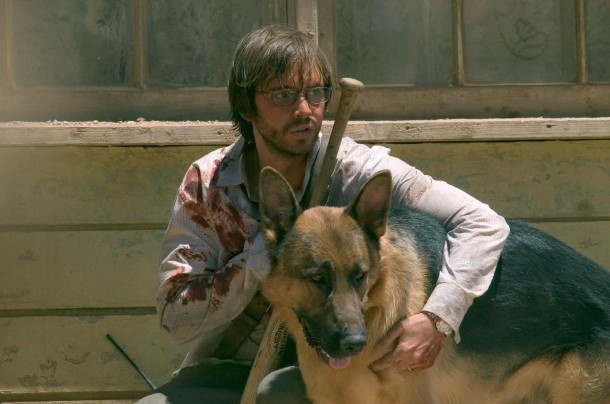
Please Stop Killing the Dog
In all forms of entertainment there exist three types of creatures which are utilized to extract sympathy from a viewer: the elderly, small kids, and dogs. If your movie needs a cheap emotional pull to get people invested in it, you simply inject one of those three in to it and you’re bound to tug at a few heartstrings.
However, veteran viewers like me are well aware of this cheap ploy and it has grown extremely tiresome. The worst offender of this cliché is the horror genre and the creature that is most often regulated to being the sacrificial lamb to the Gods of cheap emotions is the dog. Why has man’s most loyal companion been reduced to such a predictable device?
It’s true that horror movies prey on our most base fears. The most effective scares are those that attack the things we believe to be safe and secure. Our home is an impenetrable castle, our families are immune to danger, and our pets will never come to harm. These are the things we want to believe, but the best horror reminds us that we’re simply lying to ourselves.
Dogs, in particular, represent a multitude of characteristics. For many people they are security blankets, family members, or our lifeline to the world. They are one of the very few animals that people project human emotion and understanding on to. So it’s easy to see why killing one is such a tempting low hanging fruit when you’re looking to kick your audience in the gut.
And because of that, it has become a predictable and tired plot point. You show me a dog in a horror film and my brain automatically registers it as a dead animal. It’s not a shock nor is it an unpleasant surprise when the dog magically turns up dead twenty minutes later. At that point I’m wondering why it took so long to pull the trigger.

If you were to reduce the process of killing a dog in a film to a simple conversation, here’s how it would go:
“Okay Audience, here’s a dog. You like those, right?”
“Yeah, I suppose . . . why?”
“No reason. Now the dog is dead. Are you sad now?”
“Holy shit! What is wrong with you?!”
“Great, that’s a wrap.”
I guarantee that no greater thought process is given when the decision to kill a dog is made. And that is where the problem lies. If a movie is going to go through the trouble of killing a dog I’d rather it serve some greater purpose. Either give me a reason to care about the dog before you kill it or I’ll assume you had to depend on an emotional crutch to punch up your script.
I’m not advocating that from this moment on no dog should die on screen. I’m simply saying that if you’re going to have a dog in your movie, give it life and a purpose. And if you’re going to kill it, make it meaningful. One movie that does an excellent job of doing this is the remake of “I Am Legend”. In that movie the dog was practically a co-star in the film and went a long way to humanizing Will Smith’s character. When that dog died it was impactful because she was treated like a character and not like a disposable object. She had a history, an established relationship, and a purpose.
At the heart of this argument is a plea to stop using cheap emotional ploys to strengthen a film. Whether you’re threatening the safety of a dog or a child, people are well aware of the fact that they’re being manipulated. And when that awareness breaks through to the forefront of a viewer’s mind, you’re pushing them out of the experience rather than inviting them in.












